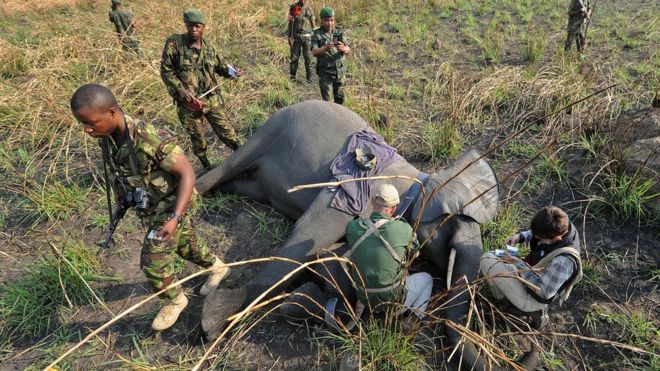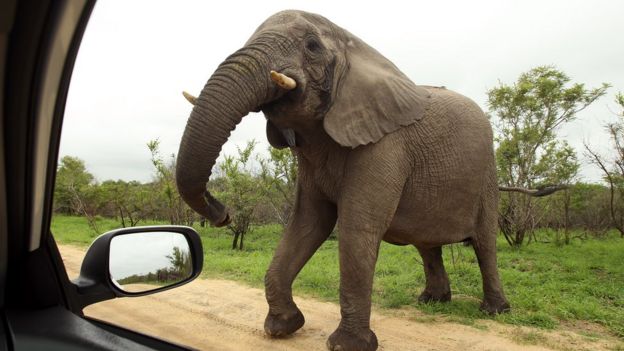The number of elephants being killed for their ivory has stabilised but overall species numbers have continued to decline.

Another elephant killed for its tusks, this time in the Democratic Republic of Congo
Data produced for 2015 shows that poachers are still killing more elephants than are born every year.
The report also highlighted a rising trend in poaching in South Africa's Kruger National Park, considered one of the safest havens.
But there was positive news from Eastern Africa where elephant number have outpaced poachers for the fourth year in a row.
Peak deaths
The Convention on the Trade in Endangered Species of Wild Fauna and Flora(CITES) compiles an authoritative set of figures on the annual trends in elephant numbers.
Called MIKE (Monitoring the Illegal Killing of Elephants), the latest data indicate that the rise in the numbers of elephant deaths, witnessed since 2006, peaked in 2011.
Since then the numbers have stabilised but the level remains "unacceptably high overall".
In 2015, the programme recorded the deaths of 14,606.
The researchers estimate that half of these were illegally killed putting the population well above the sustainability threshold, where deaths outweigh births.
"African elephant populations continue to face an immediate threat to their survival from unacceptably high levels of poaching for their ivory, especially in Central and West Africa where high levels of poaching are still evident," said John Scanlon, CITES Secretary General.
"There are some encouraging signs, including in certain parts of Eastern Africa, such as in Kenya, where the overall poaching trends have declined, showing us all what is possible through a sustained and collective effort with strong political support."

An elephant in Kruger National Park in South Africa, which saw a rise in killings in 2015
The mixed picture for the iconic species continued in Southern Africa. The overall levels of poaching remained below the sustainability threshold, but an upward trend in killing was seen in Kruger National Park for the first time.
CITES have demanded that the 19 countries most heavily involved in the killing of elephants or the consumption of ivory produce national ivory action plans to show how they plan to tackle the issue.
From BBC News- Science / Environment